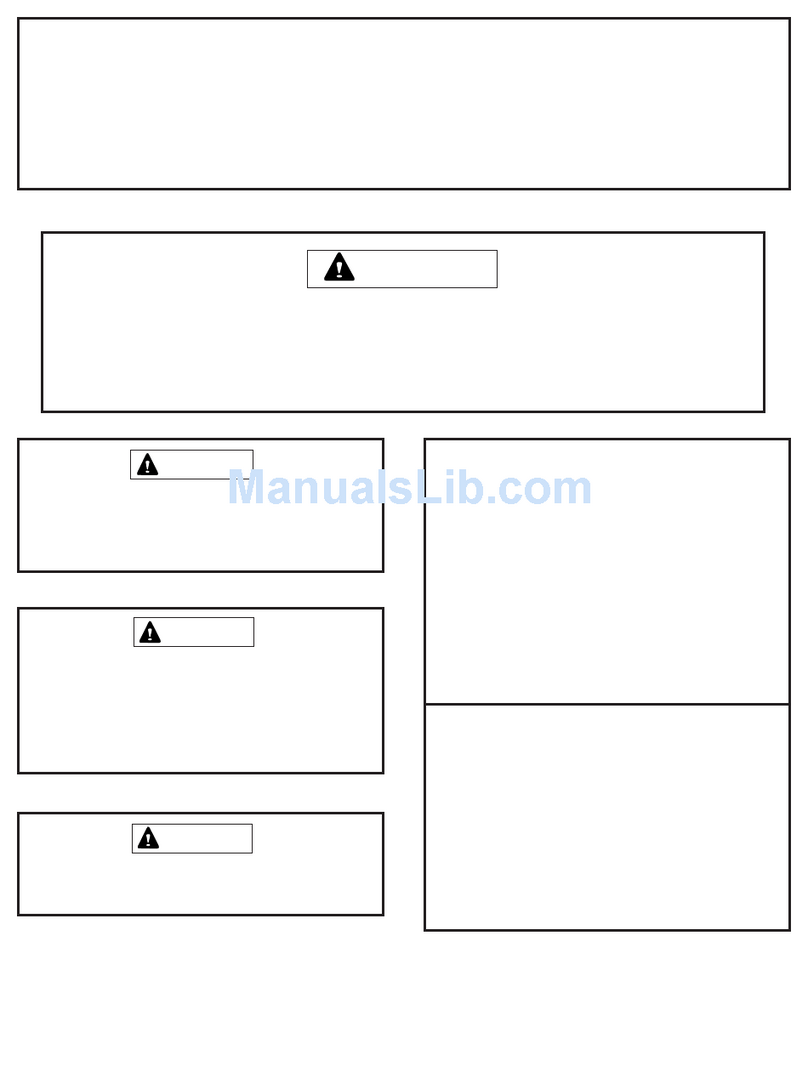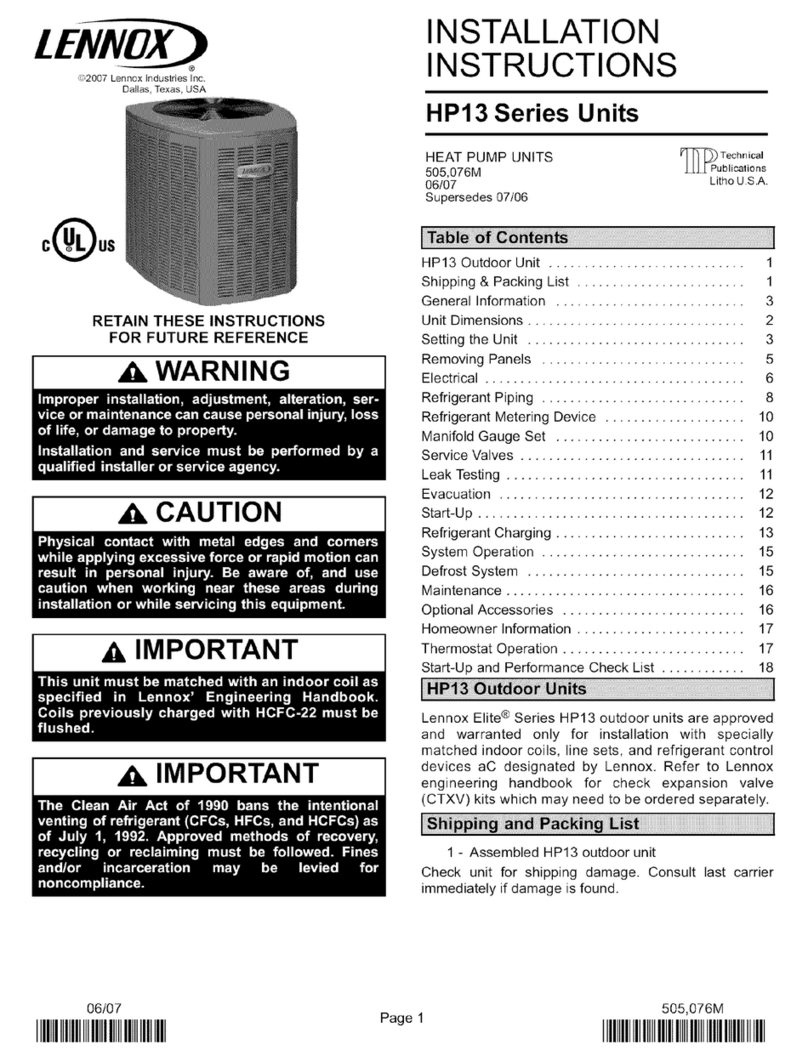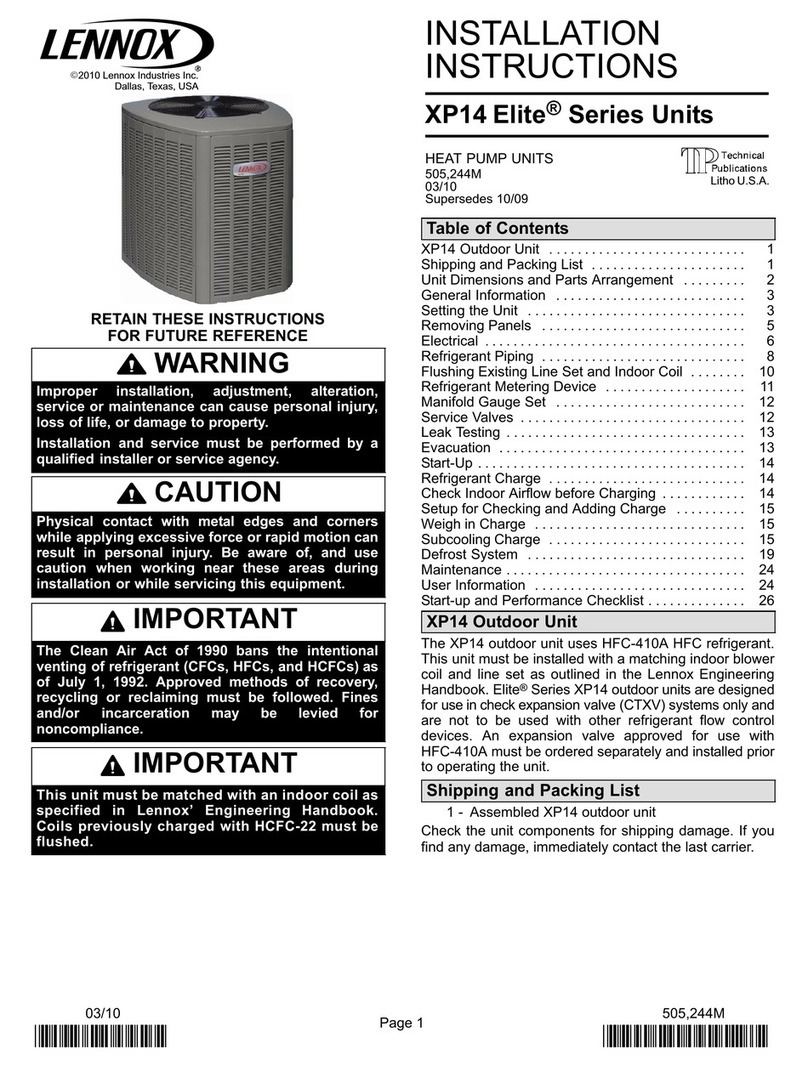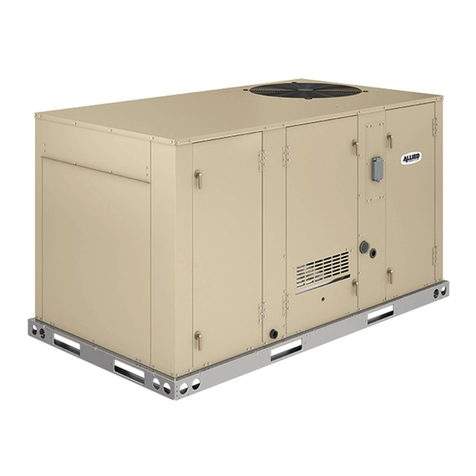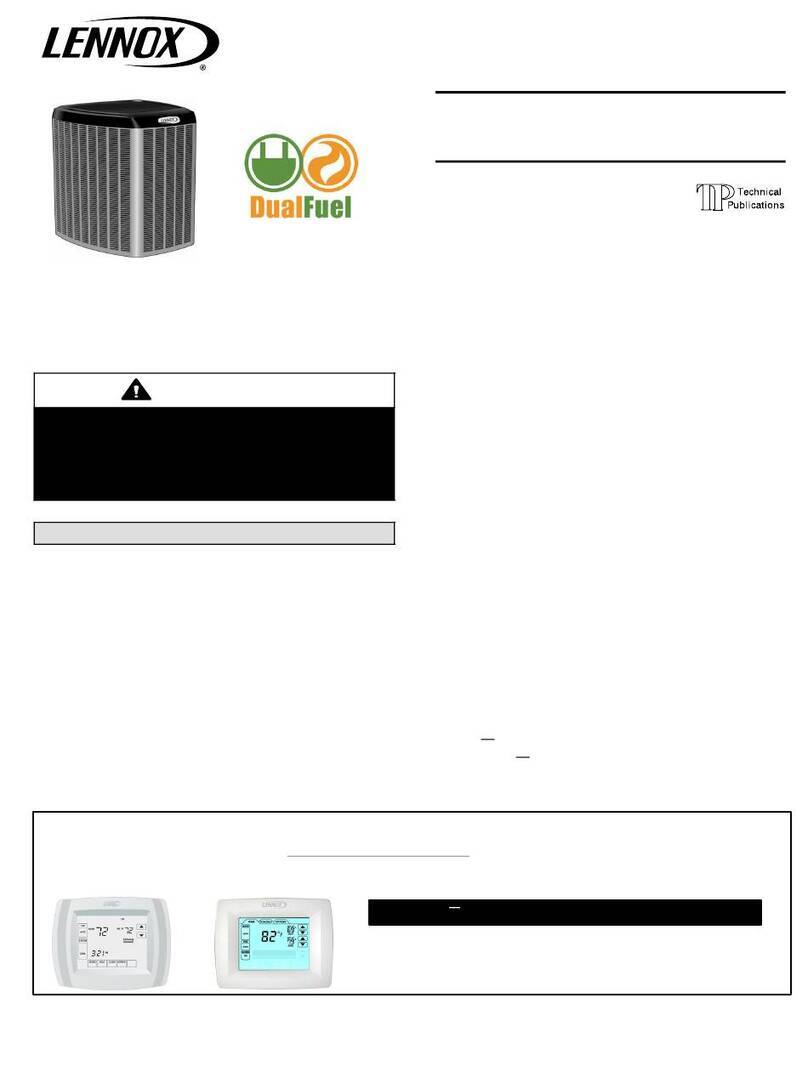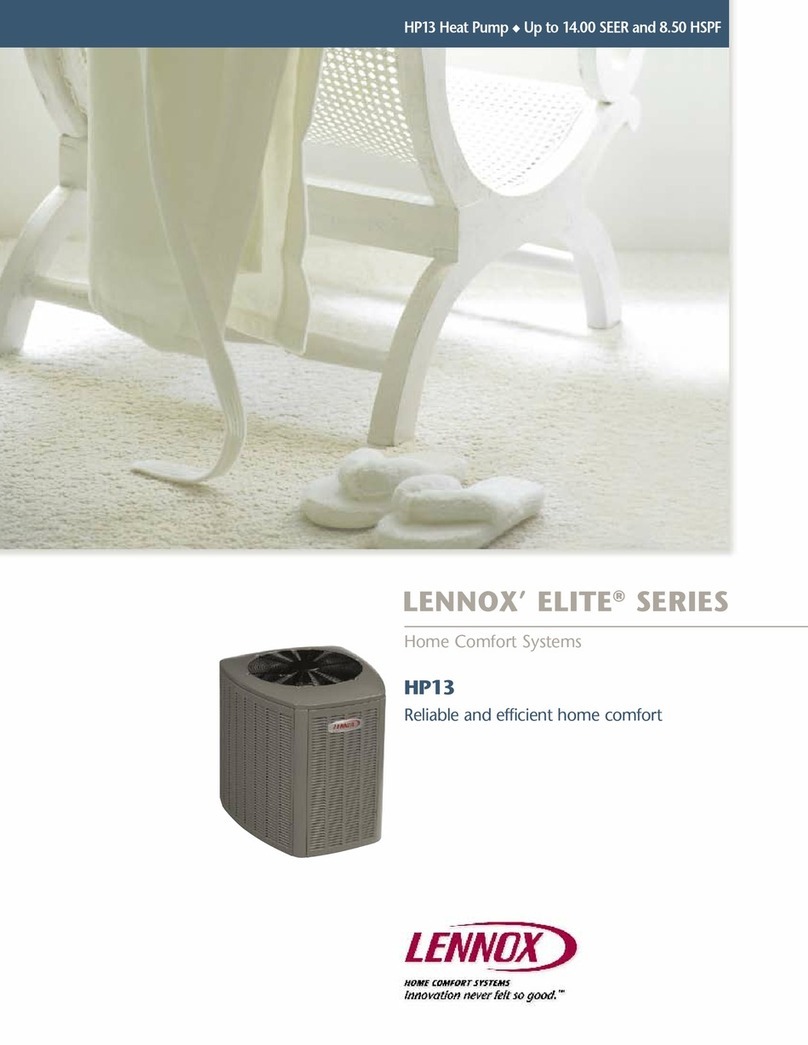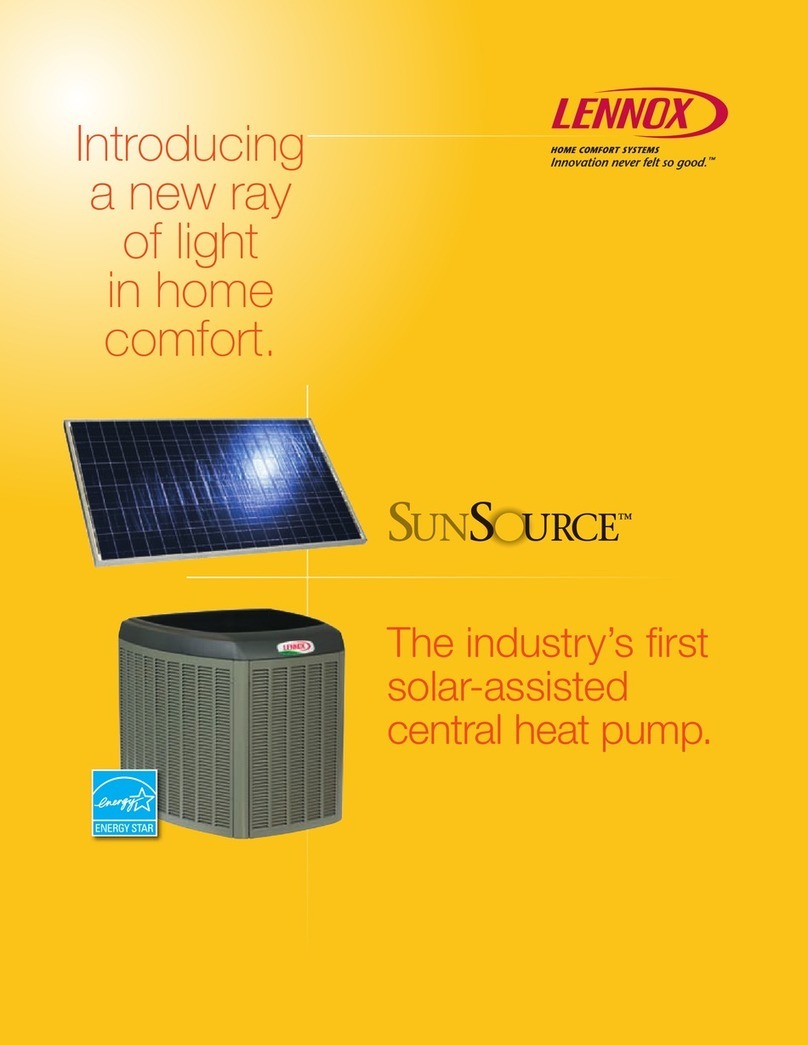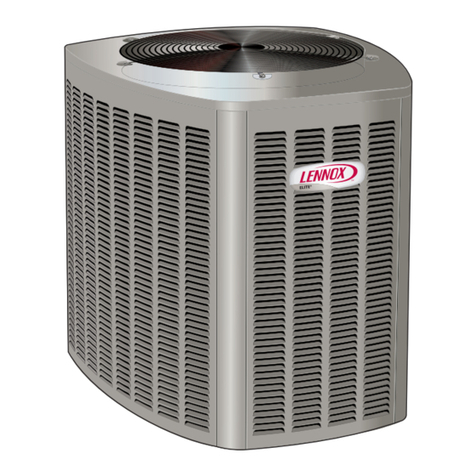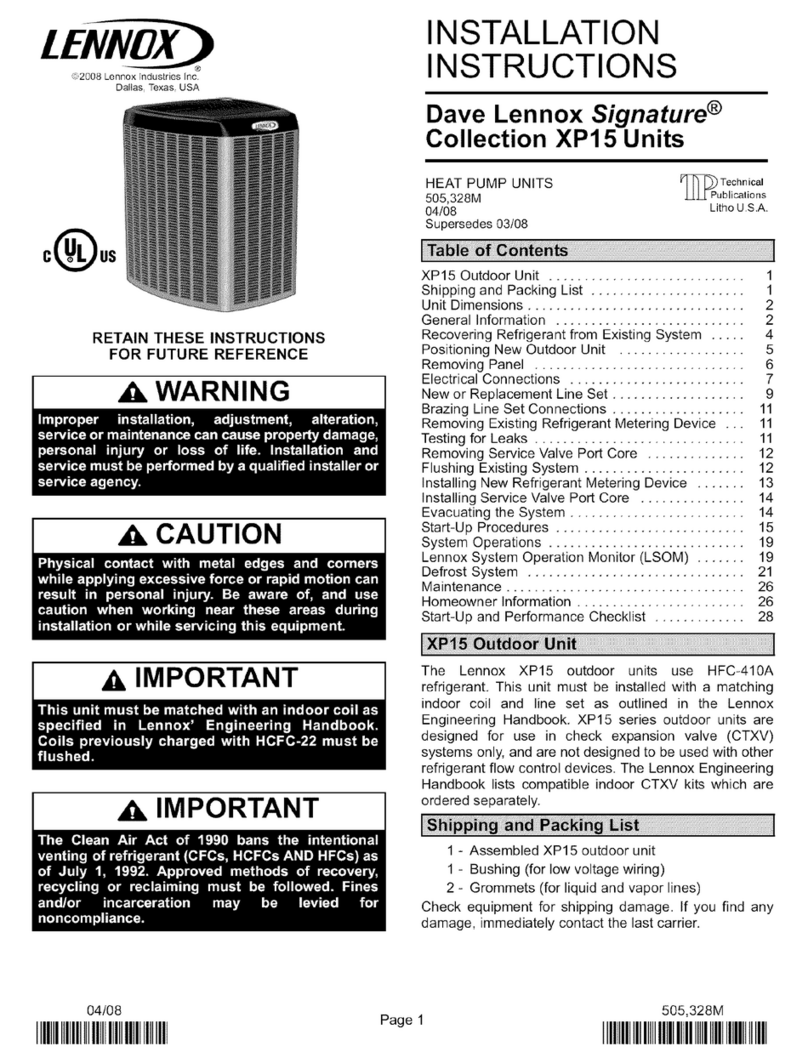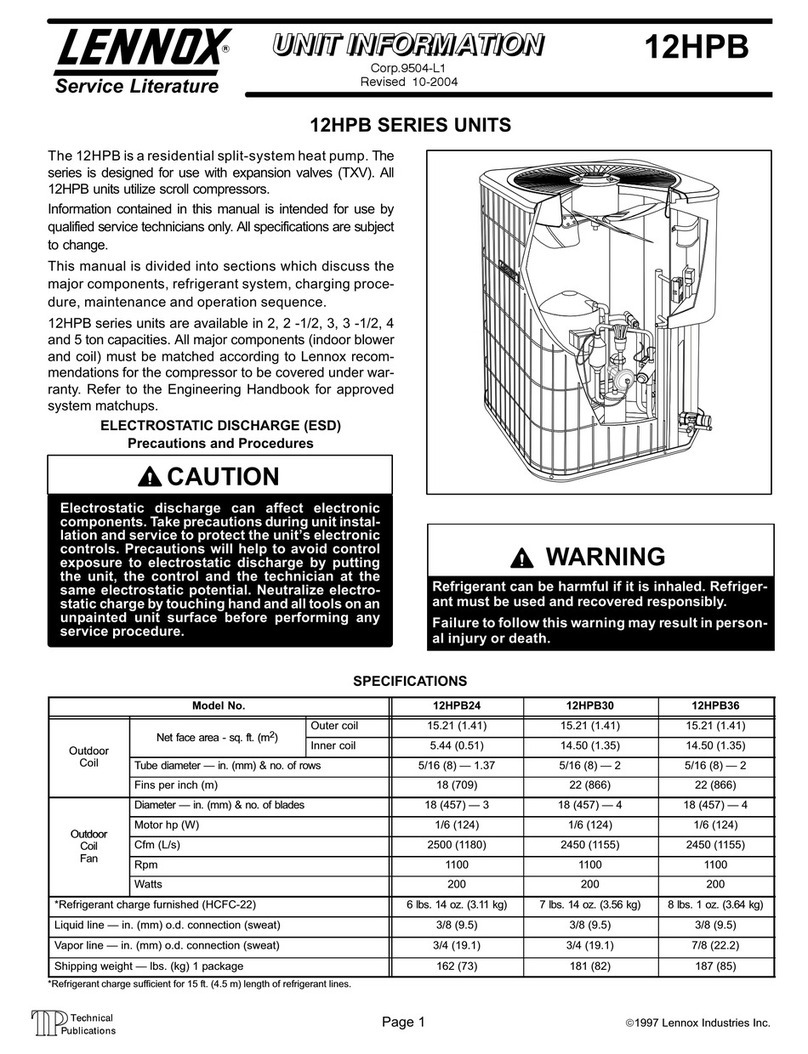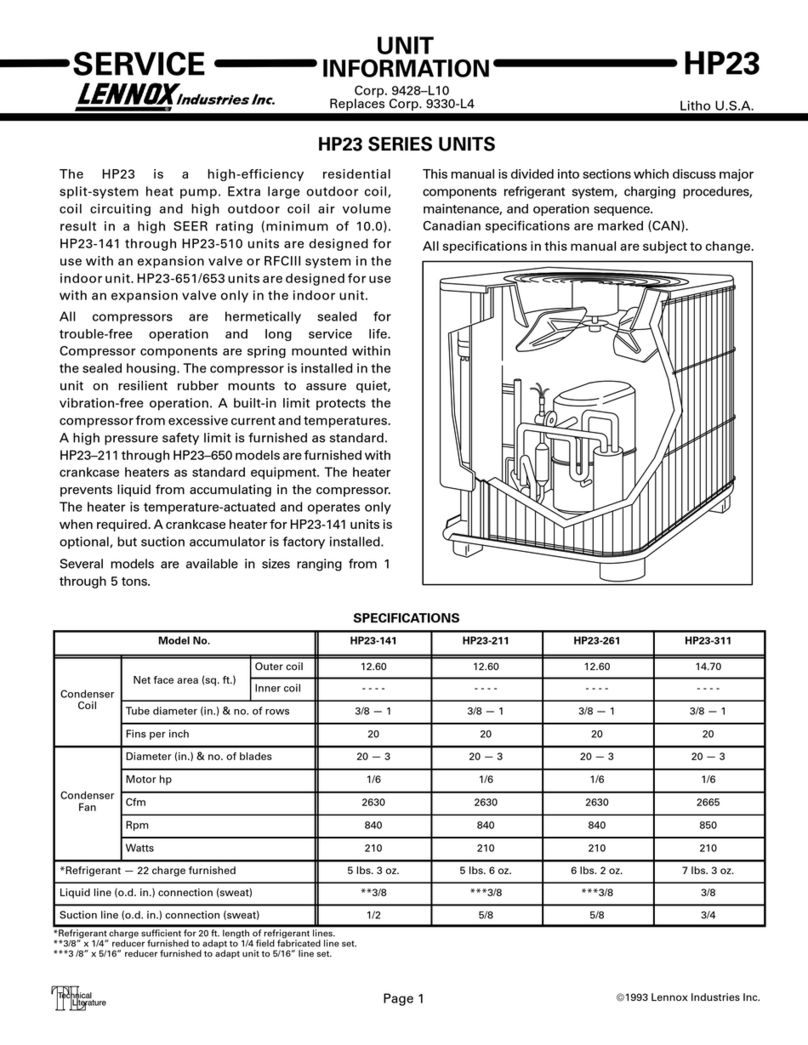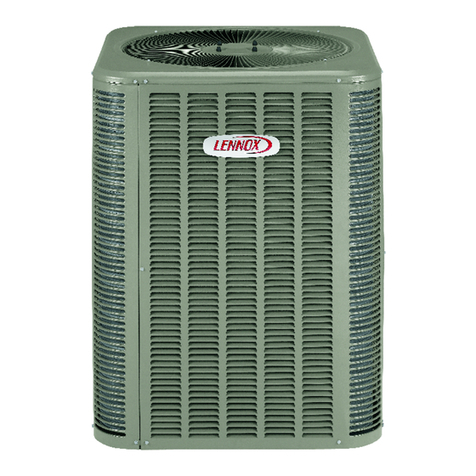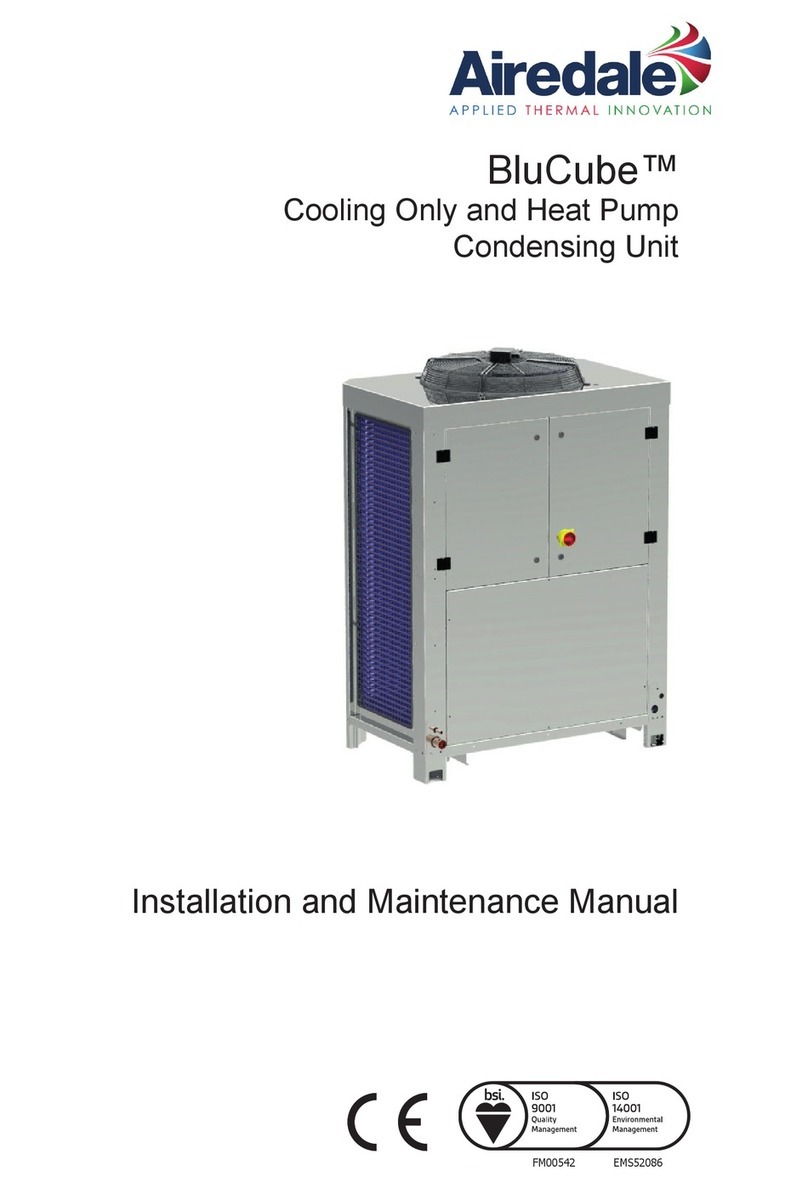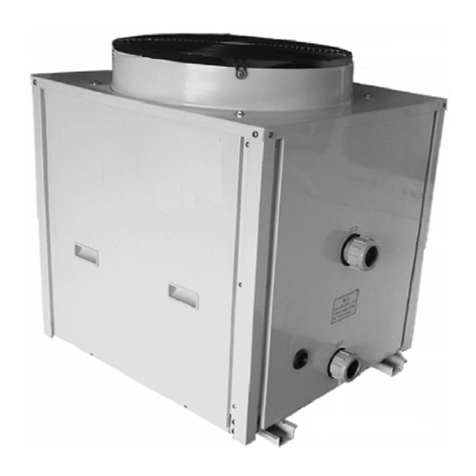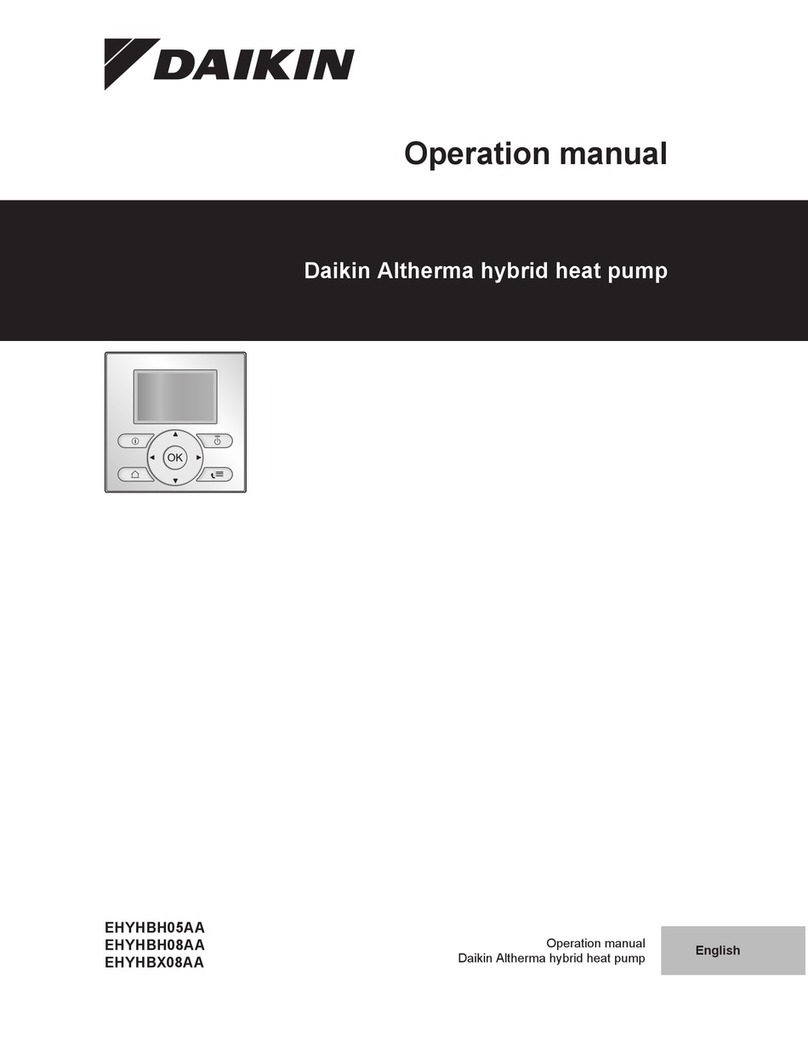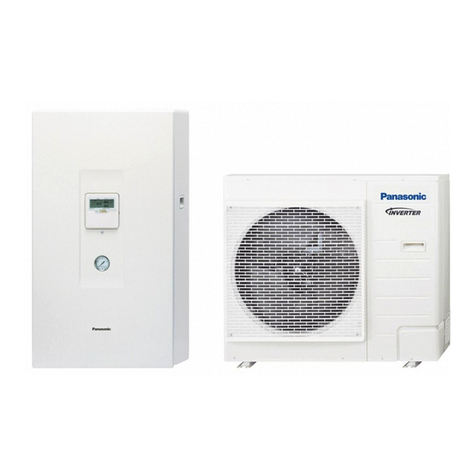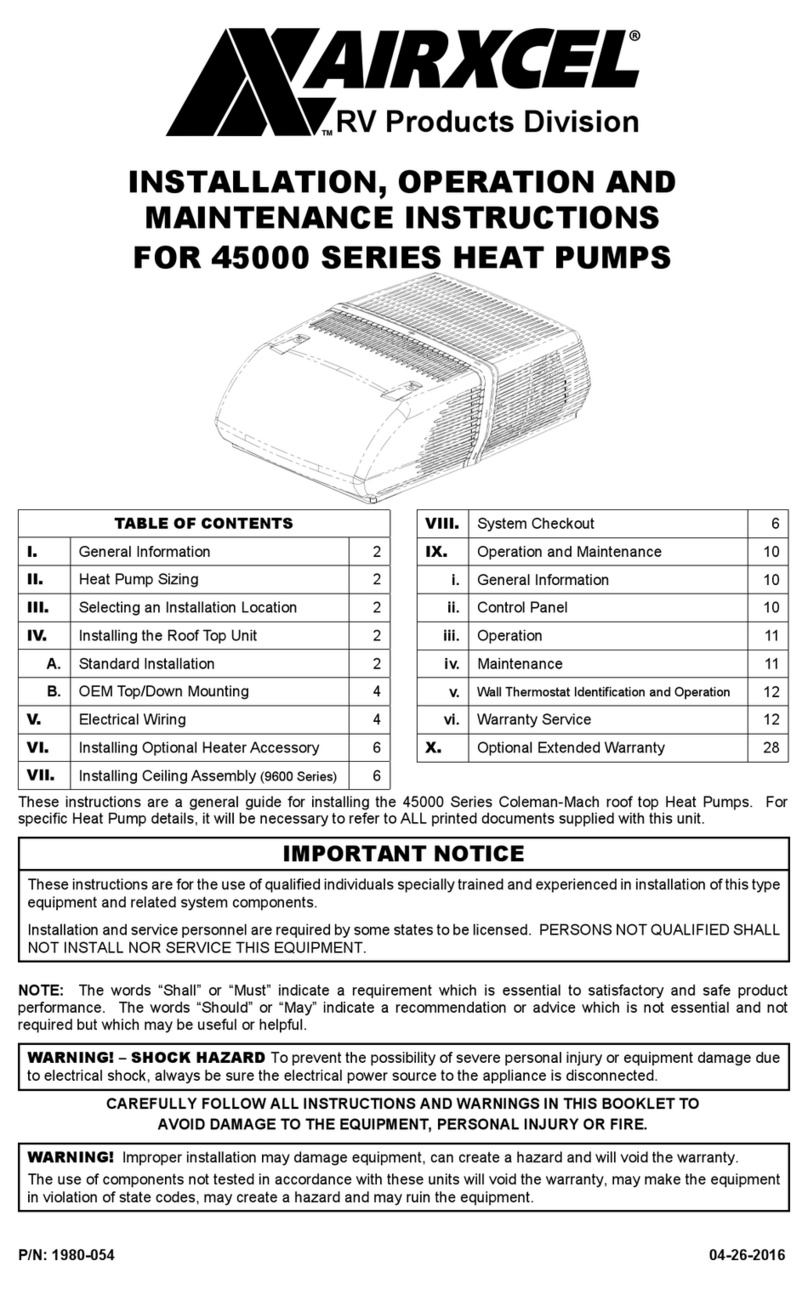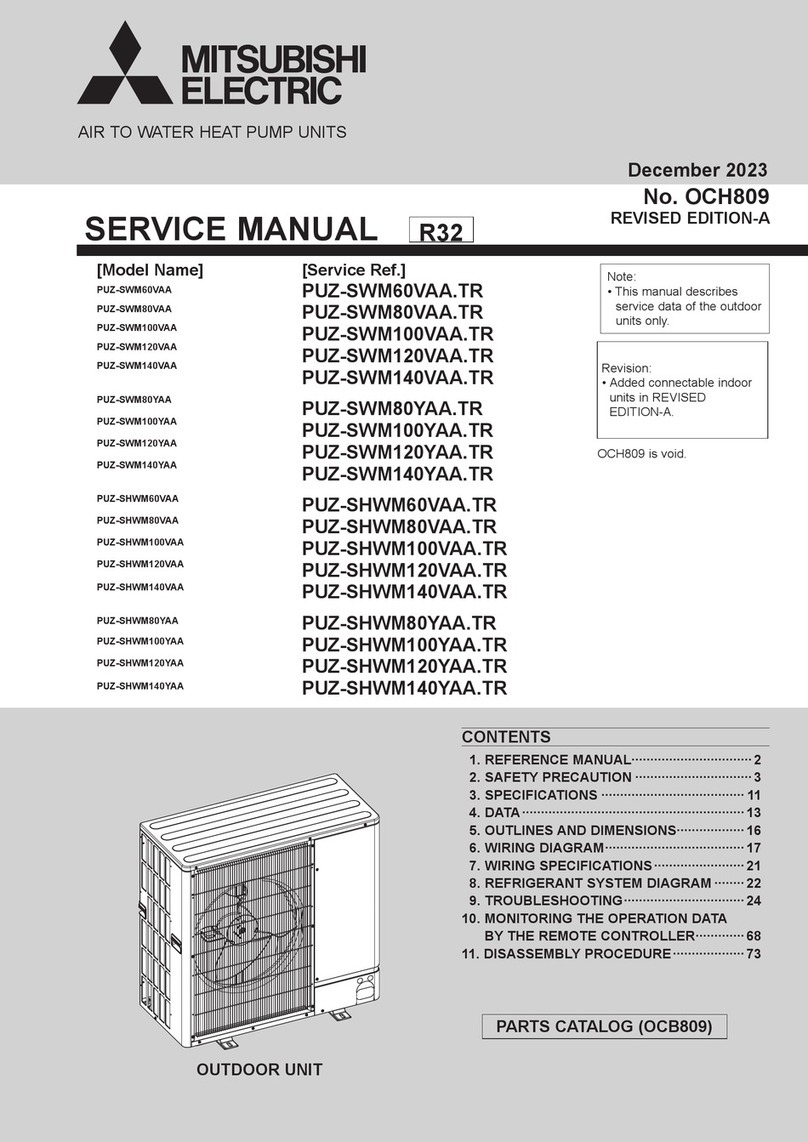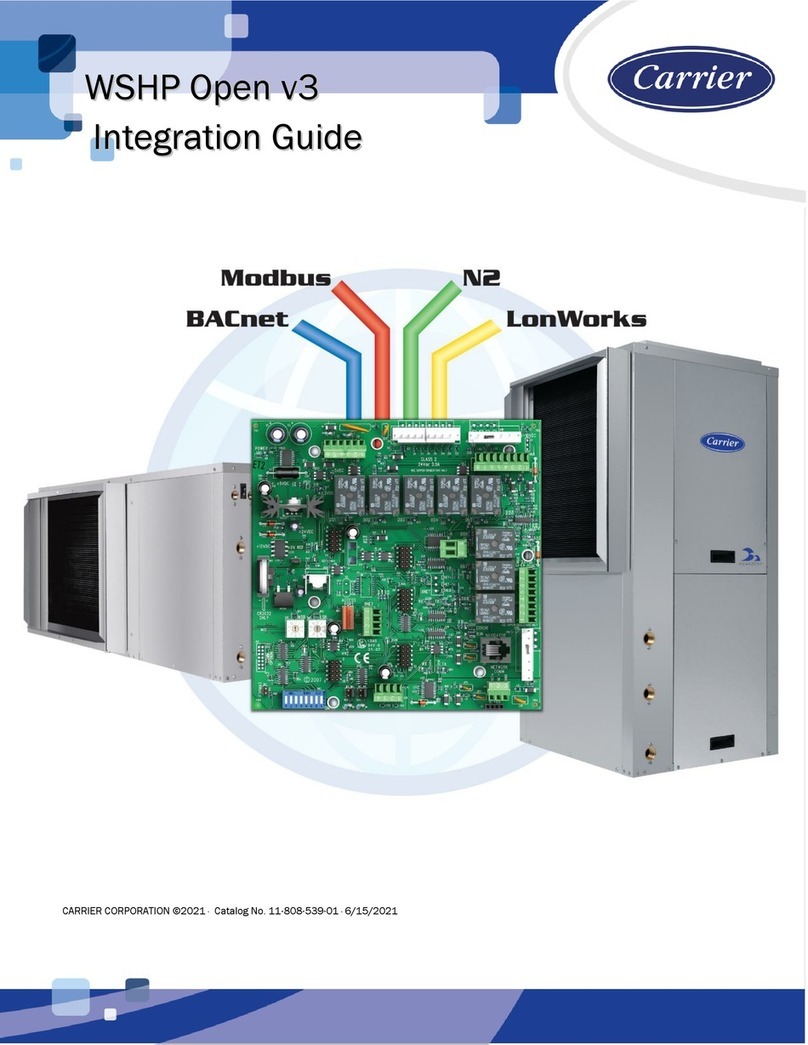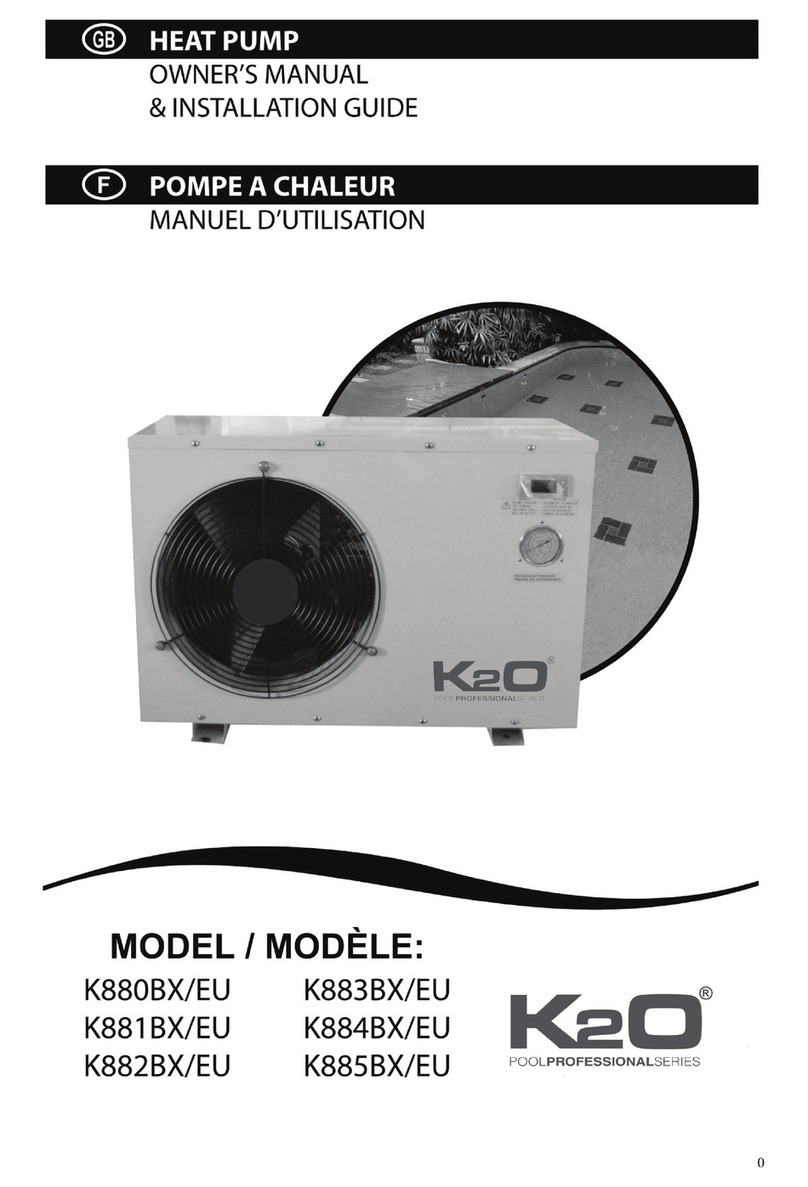
Page 10
WARNING
Fire, Explosion and Personal Safety
Hazard.
Failure to follow this warning could re-
sult in damage, personal injury or
death.
Never use oxygen to pressurize or
purge refrigeration lines. Oxygen,
when exposed to a spark or open flame,
can cause damage by fire and/or an ex-
plosion, that could result in personal
injury or death.
WARNING
Danger of explosion!
When using a high pressure gas such
as dry nitrogen to pressurize a refriger-
ant or air conditioning system, use a
regulator that can control the pressure
down to 1 or 2 psig (6.9 to 13.8 kPa).
Using an Electronic Leak Detector
1 − Connect a cylinder of R−410A to the center port of the
manifold gauge set. Connect manifold gauge to service
valve port.
2 − With both manifold valves closed, open the valve on the
R−410A cylinder.
3 − Open the high pressure side of the manifold to allow the
R−410A into the line set and indoor unit. Weigh in a trace
amount of R−410A. [A trace amount is a maximum of 2
ounces (57 g) or 3 pounds (31 kPa) pressure.] Close the
valve on the R−410A cylinder and the valve on the high
pressure side of the manifold gauge set. Disconnect the
R−410A cylinder.
4 − Connect a cylinder of nitrogen with a pressure regulat-
ing valve to the center port of the manifold gauge set.
5 − Connect the manifold gauge set high pressure hose to
the vapor valve service port. (Normally, the high pres-
sure hose is connected to the liquid line port; however,
connecting it to the vapor port better protects the man-
ifold gauge set from high pressure damage.)
6 − Adjust the nitrogen pressure to 150 psig (1034 kPa).
Open the valve on the high side of the manifold gauge
set which will pressurize line set and indoor unit.
7 − After a few minutes, open a refrigerant port to ensure
the refrigerant you added is adequate to be detected.
(Amounts of refrigerant will vary with line lengths.)
Check all joints for leaks. Purge nitrogen and R−410A
mixture. Correct any leaks and recheck.
B − Evacuating
Evacuating the system of noncondensables is critical for
proper operation of the unit. Noncondensables are defined
as any gas that will not condense under temperatures and
pressures present during operation of an air conditioning
system. Noncondensables and water vapor combine with
refrigerant to produce substances that corrode copper pip-
ing and compressor parts.
NOTE − This evacuation process is adequate for a new
installation with clean and dry lines. If excessive mois-
ture is present, the evacuation process may be required
more than once.
IMPORTANT
Use a thermocouple or thermistor electronic vacuum
gauge that is calibrated in microns. Use an instrument
that reads from 50 microns to at least 10,000 microns.
1 − Connect manifold gauge set to the service valve ports :
low pressure gauge to vapor line service valve
high pressure gauge to liquid line service valve
2 − Connect micron gauge.
3 − Connect the vacuum pump (with vacuum gauge) to the
center port of the manifold gauge set.
4 − Open both manifold valves and start the vacuum
pump.
5 − Evacuate the line set and indoor unit to an absolute
pressure of 23,000 microns (29.01 inches of mercury).
During the early stages of evacuation, it is desirable to
close the manifold gauge valve at least once to deter-
mine if there is a rapid rise in absolute pressure. A rap-
id rise in pressure indicates a relatively large leak. If this
occurs, repeat the leak testing procedure.
NOTE − The term absolute pressure means the total
actual pressure within a given volume or system, above
the absolute zero of pressure. Absolute pressure in a
vacuum is equal to atmospheric pressure minus vacu-
um pressure.
6 − When the absolute pressure reaches 23,000 microns
(29.01 inches of mercury), close the manifold gauge
valves, turn off the vacuum pump and disconnect the
manifold gauge center port hose from vacuum pump.
Attach the manifold center port hose to a nitrogen cylin-
der with pressure regulator set to 150 psig (1034 kPa)
and purge the air from the hose with nitrogen. Open the
manifold gauge valves to break the vacuum in the line
set and indoor unit. Close the manifold gauge valves.
